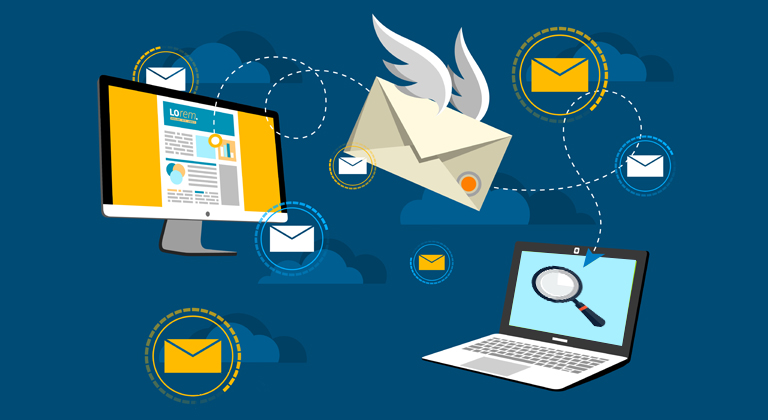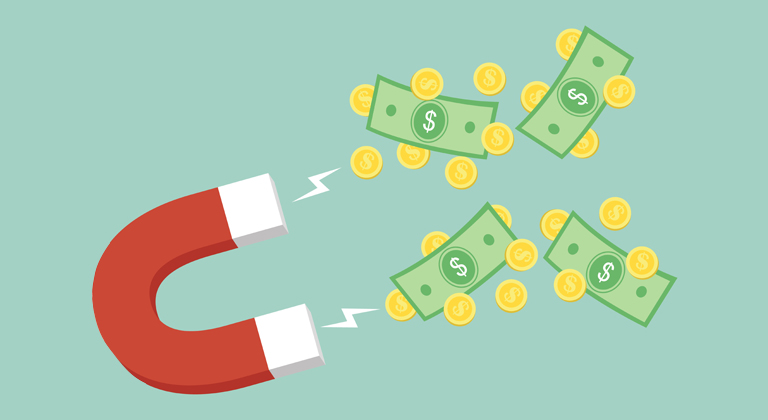Track Your Subscriber Behavior with Attribution Tags
Generating a list of readers of your books is an invaluable marketing source that can be used in a number of different ways, and it’s one of the first things that authors should set up when they begin their self-publishing journey. Until now, however, many of the benefits you gain from your list were hard to directly quantify, especially for those that have a tendency to run multiple promotions at the same time as sending out newsletters announcing their latest release.
In this final (for now) installment of our impromptu series of posts on Amazon’s new attribution tags, Ginger explains how these tags can take the guesswork out of the whole mailing list marketing process, allowing you to track your subscriber behavior down to the individual book purchase or page read. Not only can this knowledge help you grow your list and earn more money through more targeted advertising, but it may also serve to invigorate you into engaging with your fans more often, which itself can lead to happier readers that are more interested in supporting you through further sales or by introducing their book loving friends to your catalog.
I swear I didn’t intend to turn this into a series of blog posts, but after announcing the introduction of Amazon Attribution, I’ve been swept up with the incredible opportunities this tool provides for self-published authors and I don’t want to stop sharing them with you!
Today, I wanted to talk about the idea of using an Amazon Attribution Tag in the links you send out to your Subscriber Mailing List – because doing so enables you to have access to some incredible information about the real-life behavior of the people who’ve shared their email address with you.
Now, this is a more advanced concept than some, so I’m quickly going to cover some basics that are important to know before we go any further. Veteran self-published authors might yawn as I go through this lot, but it’s vital information for launching a successful self-publishing career and it’s the foundation of what we’re going to try and do with Attribution Tags.
For a start:
What is a Subscriber List?
Anybody has the potential to become a successful self-published author – you just need to learn the craft of writing and follow the process of successful self-publishing. Part of that process is creating and maintaining a Subscriber Mailing List: One of the foundational elements of a self-publishing career.
The concept is simple. In every book you self-publish you should include a link where readers can join your mailing list. Many of us start out by simply displaying our email address, but pretty soon most writers move to a service like Mailchimp or Mailerlite to manage their email lists. This means fans have a way of connecting with you – and, more importantly, you have a way of connecting with them!
Your Subscriber List is your primary audience – the people who not just read your books, but also like your writing enough to trust you with their email address. These are the first people you should tell about every new book you publish, every discount you provide, and every bit of news you generate. Each person on your mailing list is worth a thousand followers on Instagram or Twitter for a hundred reasons – not least of which is the fact that they buy your books at a much higher percentage than any other audience.
But how much of a higher percentage? That’s what an Amazon Attribution Tag exists to tell you.
What is an Attribution Tag?
For the longest time it was impossible to track the behavior of people you advertised to outside of Amazon. Whether you were sharing a new release with subscribers or advertising a book on Facebook, you could track clicks to your Product Pages on Amazon, but you could never track what those people did when they got there.
This was a big deal, especially for people advertising their books. If you spend $20 a day on advertising, you want to be able to know if you’re making $20 (or more) in book sales. You could only really do this previously through guesswork.
But now, Amazon has created Amazon Attribution, which is a system inside your Advertising on Amazon dashboard that allows you to generate unique URLs which track the behavior of people clicking on them. This means you can track each click from Facebook, Twitter, or your Subscriber Mailing List and see how many of those people checked out your books, bought them, or selected them to read with Kindle Unlimited.
It’s a game-changer – especially when it comes to your mailing list. Now you can learn for real how effective each of your email blasts or newsletters is, and what percentage of your subscribers actually spend money (which can be a problem, as I wrote about in my blog post Is Your Freebie Lead Magnet Costing You Money?)
Being able to put Attribution Tags in your email blasts now allows you to quantify how valuable your Subscriber List is, and whether or not investing more time and energy into your subscribers could help earn you more.
How do you create them?
You can access Amazon Attribution through the Advertising on Amazon dashboard, which can be found at advertising.amazon.com. Click on the Measuring & Reporting tab to the left of the dashboard and select Amazon Attribution to get started.
I won’t rehash the entire process that I went over in this post other than to say that the only major difference between creating Attribution Tags for your email subscribers, as opposed to those for Facebook ads, is that you need to select a different publisher for each Ad Group (I think Mailchimp and Mailerlite are in there by name) and specify a different channel than Social to specify that these are leads you’ll be tracking from your email campaigns.
You’ll also want to consider generating a unique Attribution Tag for each of your books, plus links to your Author Page or Series Page. You’ll use each of these depending on what you’re trying to tell your subscribers about, and this data will culminate at the Campaign Level to give you a glimpse at how effectively your strategy is working overall.
Now what do you do with them?
Now you’ve generated your Attribution tags, you want to head over to your email provider – Mailchimp or Mailerlite, or whoever you use – and trade the regular URLs you generally use in your emails for these fancy Attribution Tags. That way, you can track the behavior of every subscriber who clicks on them and see how much your Subscriber List is worth!
I’ll demonstrate two use-cases I plan to experiment with:
New Releases
When you release a new book, you obviously want to tell your subscribers about it! And now, thanks to Attribution Tags, you can track how many of them really respond.
To me, this is incredibly powerful – since there’s a lot more you can get from sending out a New Release email than just potential book sales. I mentioned above that some subscribers only signed up to your list for a free book, whereas others are eager to support you by actually buying your latest releases. Sending out a New Release email announcing your book at full price or a discount (or “free with Kindle Unlimited”) gives you the opportunity to identify which of your subscribers saw your new book and saw that they’d have to pay money for it (or at least borrow it with KU) and then went ahead and clicked anyway. These are the most valuable subscribers you have.
Now, you can track that value down to the cent by using an Attribution Tag to send them to the Product Page of your New Release, rather than just the standard Amazon URL. You’ll be able to see what percentage of your audience clicked through to the detail pages, borrowed the book on KU, or ultimately clicked the ‘buy now’ button. This gives you a great way to isolate subscribers to use when generating Lookalike Audiences, and to learn the all-important Conversion Percentage for your hottest potential readers.
Automation Process
Attribution tags are obviously useful when you’re announcing a new book, or telling readers about one of your books being on sale, but what’s really exciting to me is the idea of using Attribution Tabs in a more passive way – specifically when you’ve got an Automation Process in place for new subscribers.
The Automation Process is probably worthy of a blog post in itself, but the theory is simple enough. When new readers provide you with their email address, they go through a process in order to subscribe. A lot of authors use the Automation feature of Mailchimp or Mailerlite to drive this process – creating email templates for things like confirming a reader’s subscription, providing a download link to a free “Lead Magnet” book, and introducing them to who you are as an author.
Usually, this process ends with the reader being directed to an Amazon product page – I send my subscribers to a box set so they can buy the next three books in the series all at once. Now, I can use an Amazon Attribution tag to see if any of them end up buying it as a result!
The exciting part of including Attribution Tags in your subscription process is that they run by themselves in the background. All you have to do is check in every so often to see how effective your subscriber signup process is being for you. If you’re smart about building out a good Automation Process for your subscriber signups, you might end up being able to actually earn money off the back of it – and Attribution Tags will prove it!
Finally Connecting the Dots
I personally think Attribution Tags are going to be a game-changer for my subscribers. Being able to see tangible data reinvigorates the idea of having a Subscriber Mailing List in the first place. When you’re actually able to measure clicks (and hopefully sales) from your subscriber list, it’s so much more fun to interact with them; and the end results benefit everybody because it makes you more likely to do exactly that!
There are all sorts of ways in which Attribution Tags are going to be a big deal for self-published authors and this is currently the one I’m most excited about. If you’re excited, too, try it out for yourself and let us know in the comments section below whether you found value in it.
And if you can think of other use-cases for Attribution Tags, be sure to let us know. Finally self-published authors have a really powerful tool in their arsenal and it’s going to exciting to see all the clever ways they work out how to use them.












I love this blog series. There are so many ways to use these tags!